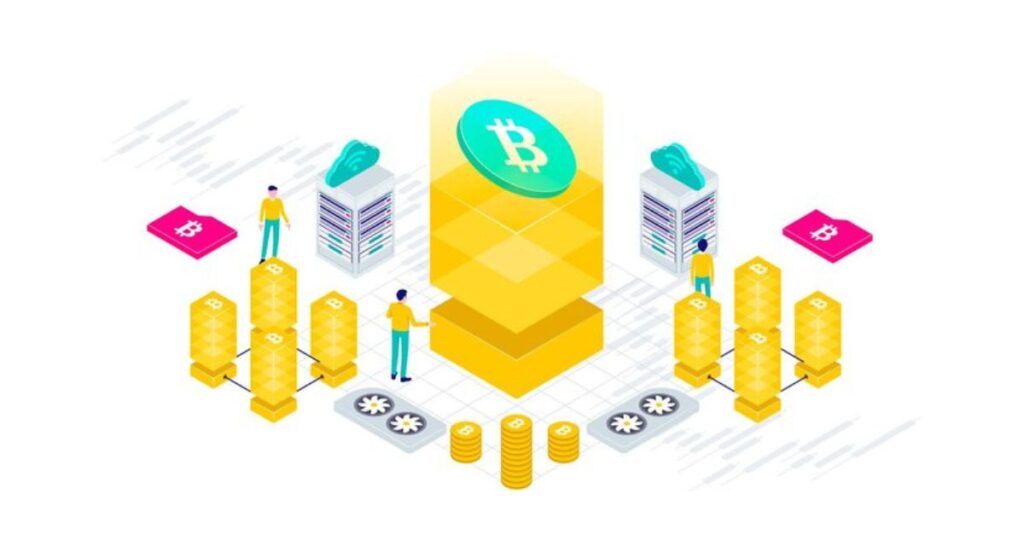
Decentralized Finance (DeFi) is revolutionizing the financial landscape, unlocking countless opportunities for investors and developers alike. Yet, with innovation comes complexity, and navigating the realm of DeFi requires a nuanced understanding of its potential benefits and challenges.
In this blog, we delve into the exciting world of DeFi, exploring the opportunities it presents alongside the challenges that investors and developers must navigate.
Understanding DeFi
Decentralized Finance is a revolutionary paradigm shift in the financial industry, leveraging blockchain technology to create a transparent, accessible, and permissionless ecosystem.
Unlike traditional finance, which relies on centralized intermediaries, DeFi platforms operate autonomously through smart contracts, enabling users to access a wide range of financial services without the need for trust in third parties.
For instance, lending protocols like Compound and Aave allow users to lend or borrow digital assets directly, earning interest or accessing credit without traditional intermediaries.
Decentralized exchanges (DEXs) such as Uniswap and PancakeSwap facilitate peer-to-peer trading of cryptocurrencies without centralized order books, providing users with greater control over their funds and liquidity. Other examples include yield farming platforms like Yearn Finance, which optimize returns by automatically reallocating funds across different DeFi protocols. Overall, DeFi represents a disruptive force that democratizes access to financial services, fosters innovation and empowers individuals to participate in a borderless financial system.
Opportunities for Investors
Yield Farming and Liquidity Mining:
Yield farming involves utilizing various DeFi protocols to maximize returns on cryptocurrency holdings. Users can earn rewards by providing liquidity to liquidity pools, participating in governance activities, or lending their assets on decentralized platforms. Liquidity mining, a subset of yield farming, specifically incentivizes users to add liquidity to decentralized exchanges (DEXs) by rewarding them with additional tokens. Therefore, participants must carefully assess the risks and rewards before engaging in yield farming or liquidity mining.
Decentralized Lending and Borrowing:
DeFi lending platforms like Compound and Aave enable users to lend or borrow digital assets without the need for traditional intermediaries such as banks. Users can earn interest by supplying assets to lending pools or borrow assets by providing collateral. These platforms offer competitive interest rates and support a wide range of assets, fostering financial inclusion by providing access to credit without the need for extensive KYC procedures or credit checks. Additionally, decentralized lending and borrowing facilitate capital efficiency by allowing users to leverage their assets without liquidating them.
Decentralized Exchanges (DEXs):
DEXs are platforms that facilitate the exchange of digital assets without relying on centralized intermediaries. Unlike traditional exchanges, which match buyers and sellers through order books managed by a central authority, DEXs use automated market-making algorithms and liquidity pools to enable peer-to-peer trading. DEXs like Uniswap and SushiSwap have gained popularity due to their user-friendly interfaces, low trading fees, and permissionless nature, attracting significant liquidity and trading volume.
Challenges for Investors
- Security Risks: DeFi protocols are susceptible to smart contract vulnerabilities and hacking attacks, leading to substantial losses for users. Conducting thorough due diligence and using reputable platforms are crucial to mitigate such risks.
- Market Volatility: The decentralized nature of DeFi can exacerbate market volatility, resulting in rapid price fluctuations and impermanent losses for liquidity providers. Diversification and risk management strategies are essential to navigate volatile market conditions.
- Regulatory Uncertainty: Regulatory frameworks surrounding DeFi are still evolving, raising concerns about compliance and potential regulatory crackdowns. Investors must stay informed about regulatory developments and assess the legal implications of participating in DeFi activities.
Opportunities for Developers
Innovation and Experimentation:
DeFi offers a fertile ground for developers to innovate and experiment with novel financial products and services, leveraging blockchain technology to create transparent, interoperable, and censorship-resistant solutions.
Protocol Development:
Building scalable, secure, and user-friendly DeFi protocols presents significant opportunities for developers to contribute to the growth of the ecosystem and capture value through token incentives or protocol fees.
Decentralized Autonomous Organizations (DAOs):
DAOs enable community governance and decision-making, empowering developers and users to collectively steer the direction of DeFi projects. Engaging with DAOs can foster collaboration and drive ecosystem growth.
Challenges for Developers
- Security Audits and Code Review: Ensuring the security and reliability of smart contracts is paramount in DeFi development, necessitating rigorous security audits and code review processes to mitigate the risk of vulnerabilities and exploits.
- Scalability and Interoperability: Scalability remains a challenge in DeFi, with concerns about network congestion and high gas fees limiting the adoption of decentralized applications. Developers are actively exploring layer 2 scaling solutions and interoperability protocols to address these scalability issues.
- User Experience (UX) Design: Improving the user experience is essential for the mainstream adoption of DeFi applications, requiring developers to prioritize intuitive interfaces, seamless onboarding processes, and robust customer support mechanisms.
Conclusion
As DeFi continues to disrupt traditional finance and reshape the financial landscape, both investors and developers stand to benefit from the myriad opportunities it presents. However, navigating the complexities of DeFi requires diligence, resilience, and a commitment to innovation. By understanding the opportunities and challenges inherent in the DeFi ecosystem, stakeholders can harness its transformative potential and contribute to its long-term sustainability and growth.


